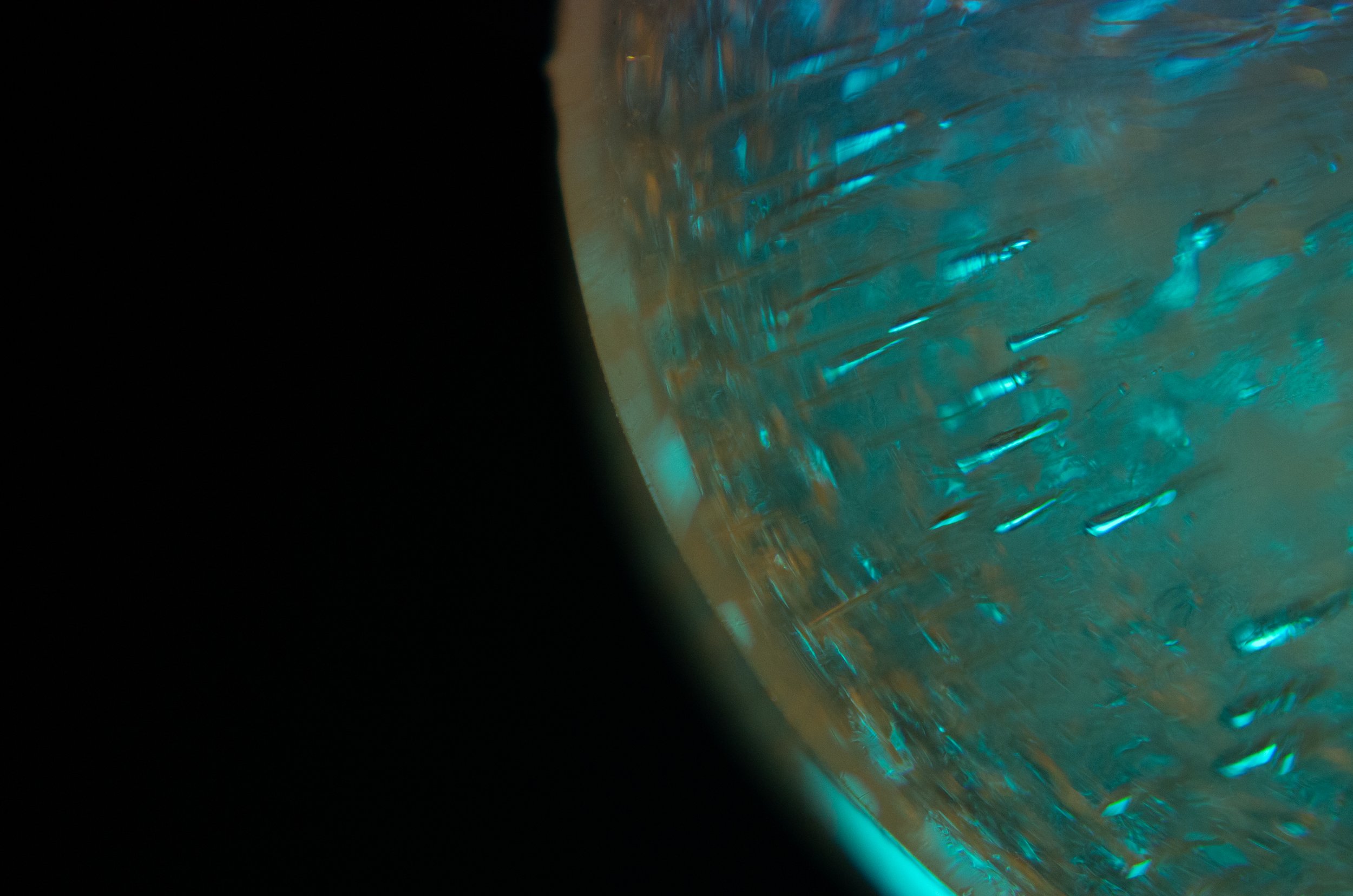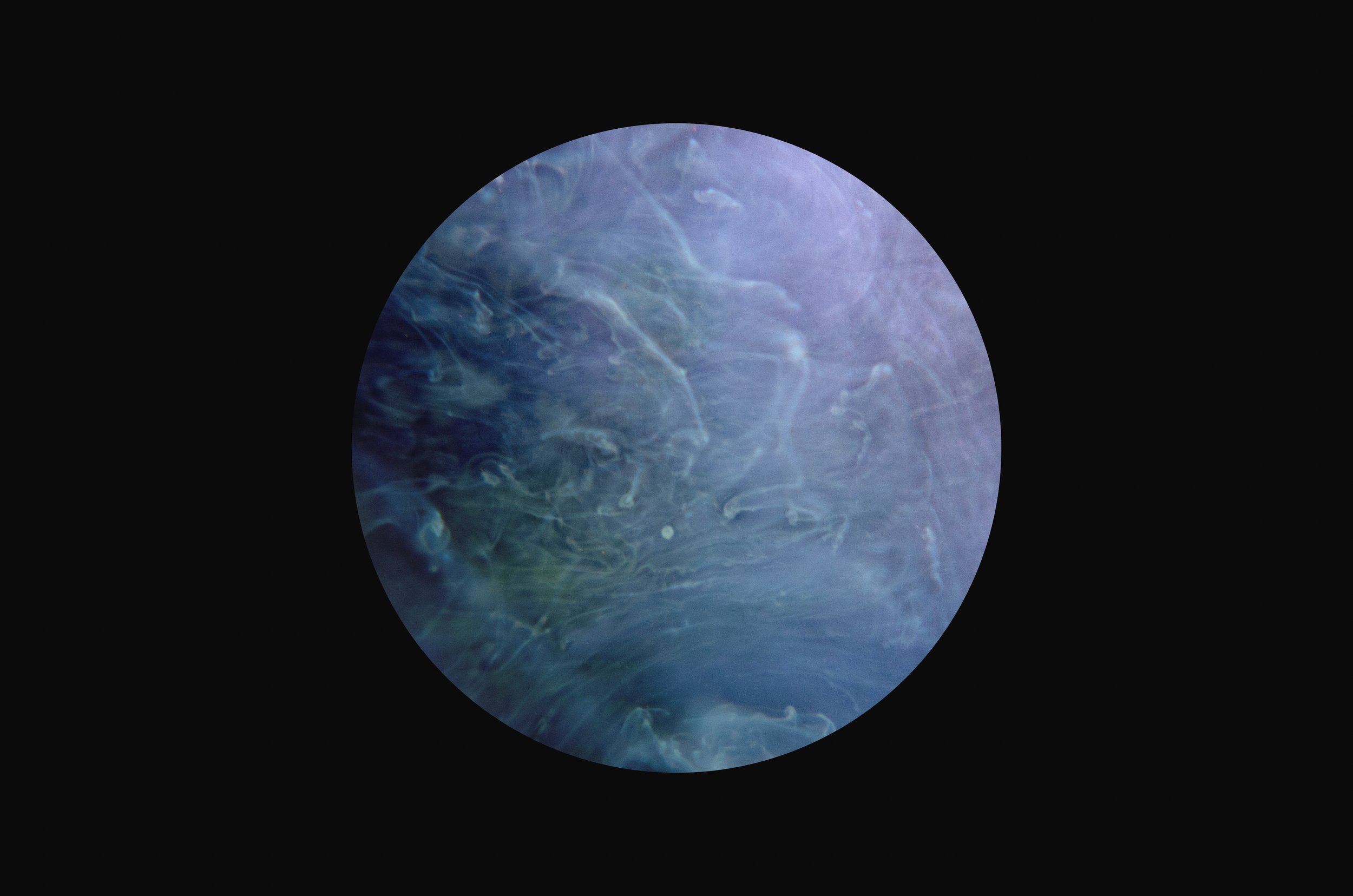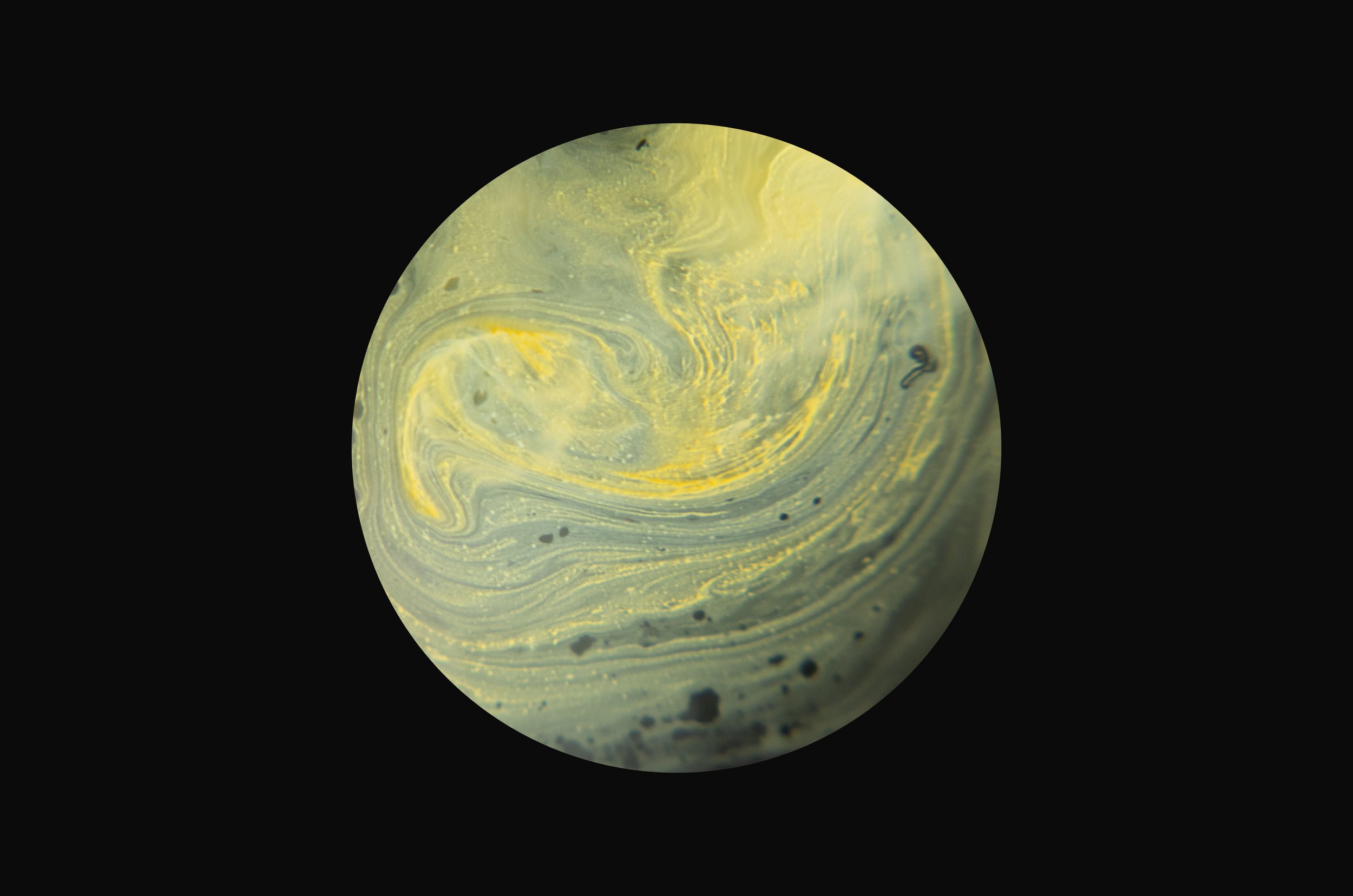
Invisible Planets
Shortlisted for the Aesthetica Art Prize 2023
A series creating images of potential exoplanets through the exploration of details and patterns within my immediate environment, reflecting the way that the particles and patterns that make up the universe are echoed between the smallest and largest scales.

Ice Giant

Barren

Amateru

Hycean

Gas Dwarf

Jovian

Panthalassa

Osiris

Dimidium

Galileo

Artemis

Gas Giant

Neptunian

Draugr

Tidal Lock
In this video I talk about some of the methods used in the detection of exoplanets and the science used to determine their size and composition. The soundtrack is taken from the NASA sonification of the light curve of the star KIC12268220C, detected by the Kepler Space Telescope. The original sonification can be heard on the NASA Soundcloud
Many thanks to J.D. Tucker for cleaning up and compiling the audio for this video.
An extra solar planet, or exoplanet, is a planet orbiting a star other than our Sun. As of April 2022 astronomers have identified over 5,000 confirmed exoplanets and 3,540 planetary systems within the Milky Way, and it is believed that there could be at least as many planets in our galaxy as there are stars.
There are several methods used to detect exoplanets. One is radial velocity, which detects a shift in the stars’ light frequency. This shift is caused when the mass of an exoplanet is significant enough in comparison to the mass of the star to cause a wobble in the common centre of mass shared by all gravitationally bound systems involving stars. Modern instruments are sensitive enough to measure the slight difference in the Doppler Shift – where light in the spectrum appears shifted towards blue or red depending on whether the object is moving towards or away from the observer. This method is only useful for finding very large exoplanets.
51 pegasi b was the first exoplanet detected and confirmed around a sun like star in October 1995, and the prototype for the ‘Hot Jupiter’ class of planets. These planets are giant gas exoplanets with very short orbital periods of less than ten days. They are usually tidally locked, with unusually low densities and extreme and exotic atmospheres and are common around F and G type stars (our Sun is a G-type star). The maximum mass for one of these planets is 13.6 times the mass of Jupiter. Any larger and deuterium fusion occurs, creating a brown dwarf (a hybrid between a planet and star, also known as a ‘failed star’).
Most exoplanets are found using the transit method. When a planet passes between its star and Earth the stars’ light dims by up to (at most) a few percent. If this happens regularly, this dip in the light of a star over time can reveal an otherwise hidden planet orbiting the star. The light curve obtained by graphing the light of a star over time also allows scientists to deduce the tilt of the exoplanets orbit and size.
The planetary system surrounding the pulsar B1257 +12, 2,300 light years away in the constellation of Virgo was discovered using the Pulsar Timing Method. A pulsar is a fast spinning neutron star formed from the collapsed core of a massive star gone supernova, which emits regular pulses of radio waves and other electromagnetic radiation. By measuring the regular pulses between 1994 and 2013 astronomers were able to determine that a planet was causing variations in the data. Draugr, the planet closest to the pulsar, is listed as the least massive planet known, about twice as massive as the moon. Pulsars have enormous magnetic fields and regularly release large busts of X-rays and highly energetic particles. It is assumed that this planetary system must be a dead one as planets orbiting one of these stars would receive little light and be constantly blasted by radiation and stellar wind. X-rays can break apart DNA and the pulsar wind is composed of high speed subatomic particles whipped into a frenzy by its magnetic field which can strip away an atmosphere within a few thousand years.
It is possible to detect exoplanets through direct imaging, however due to the vast distances and limits to our technology, to date only a handful have been discovered this way.
Spectroscopy is the process that allows astronomers to analyse the chemical composition of stars and distant planets. When light is focused in a particular way then any chemicals it passes through will produce lines in the more familiar rainbow spectrum, creating a unique signature for each element. This allows us to examine the composition of atmospheres of exoplanets hundreds of light years away from Earth. Astronomers also look for biosignatures – signs that life may be present on the planet. These include oxygen, methane, ozone and nitrous oxide, which are all present on earth, as well as the biomarkers methyl chloride and dimethyl sulphide, which are less abundant on Earth but could be promising indicators of life on planets with hydrogen rich atmospheres where oxygen or ozone is not as abundant.
As these discoveries are made, it has become clear that the exoplanet population and make up of planetary systems is far more diverse than previously imagined, and that our Solar System is not the paradigm within our galaxy. The next step for astronomers is to study the formation and evolution of these planetary systems to gain a greater understanding of how this diversity is created.